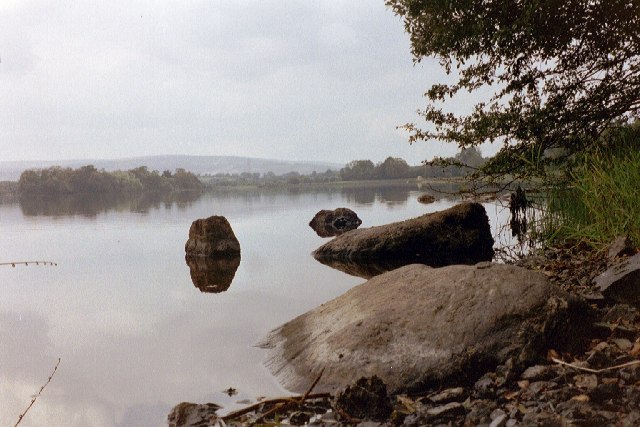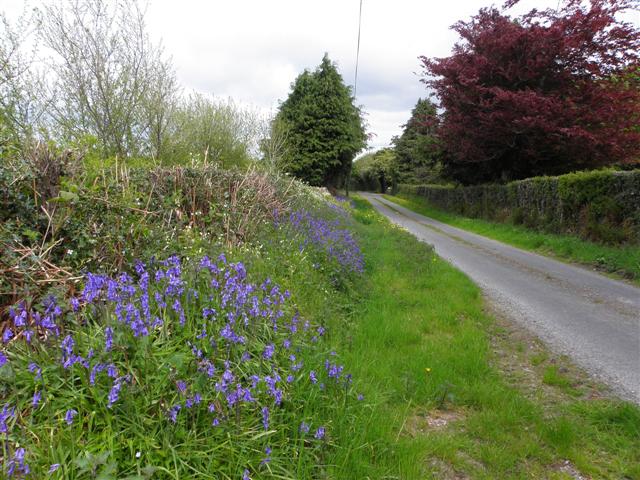|
Cranaghan
Cranaghan is a townland in the Parish of Tomregan, Barony of Loughtee Lower, County Cavan, Ireland. Etymology The townland name is an anglicisation of the Gaelic placename ''Crannachan'' which means ‘Woodland’. The earliest surviving mention of the townland is on the 1609 Ulster Plantation map of the Barony of Loughtee, where it is spelled ''Granchinah''. A 1610 grant spells it as ''Granchinagh''. A 1627 grant spells it as ''Granchynagh, or Craynkyney, and Cronaghan''. The 1790 Cavan Carvaghs list spells the name as ''Cranaghan''. Ambrose Leet's 1814 Directory spells the name as ''Cranaghan''. Geography It is bounded on the north by Killywilly townland, on the east by Ardue, Ture, Drumlane and Greaghrahan townlands, on the south by Aghavoher and Carrigan townlands and on the west by Cavanagh (townland) and Mullaghduff townlands. Its chief geographical features are Killywilly Lough, Agavoher Lough, Lough Rud, the Rag River and several small drumlin hills reaching to an alt ... [...More Info...] [...Related Items...] OR: [Wikipedia] [Google] [Baidu] |
Greaghrahan
Greaghrahan is a townland in the civil parish of Drumlane, Barony of Loughtee Lower, County Cavan, Ireland. Etymology The townland name is an anglicisation of a Gaelic placename, ''Gréach Raithin'', meaning either 'The Rough-Pastureland of the Ferns', or "The Rough-Pastureland of the Little Fort". The local pronunciation is ' ''Grah-Rah-In'' '. The 1609 Ulster Plantation map of the Barony of Loughtee shows it as forming one of the two polls contained in Ballyhugh townland, which is spelled ''Belloghea''. By 1628 the two townlands had been separated. An Inquisition dated 30 September 1628 spells it as ''Gariathranie''. The 1654 Commonwealth Survey spells it as ''Greaghrahen''. The 1660 Books of Survey and Distribution spell it as ''Greaghrane''. The 1661 Inquisitions spell it as ''Greaghrane''. The 1790 Cavan Carvaghs list spells the name as ''Greaghrahan''. Geography Greaghrahan is bounded on the north by Cranaghan townland, on the east by Ture, Drumlane townland, on the so ... [...More Info...] [...Related Items...] OR: [Wikipedia] [Google] [Baidu] |
Aghavoher
Aghavoher () is small a townland in the civil parish of Tomregan, County Cavan, Ireland. It is approximately in area and lies in the former barony of Loughtee Lower. Geography Aghavoher is bounded on the north by Cranaghan townland, on the west by Clifton, County Cavan, Mullynagolman and Carrigan townlands, on the south by Breandrum, Tullyhunco townland and on the east by Greaghrahan and Carn townlands. Its chief geographical features are Aghavoher Lough and the Rag River on its northern boundary and a small hill which rises to 306 feet above sea level. Aghavoher is traversed by the Kildallan road and Carrigan lane. The townland covers 228 statute acres including eleven acres of water. The sub-divisions of the townland are Sandville and Sandybrook. History The earliest surviving spelling of the townland name is in a printed list of Cavan townlands dated 1790 where it is spelled ''Aughiogher''. Ambrose Leet's 1814 Directory spells the name as ''Augavoher'' with the residen ... [...More Info...] [...Related Items...] OR: [Wikipedia] [Google] [Baidu] |
Carrigan
Carrigan is a townland in the Parish of Tomregan, Barony of Loughtee Lower, County Cavan, Ireland. Etymology The townland name is an anglicisation of the Gaelic placename ''Cairrig-ín'' which means 'A little rock or a rocky surface'. The oldest surviving mention of the name is in a 1790 list of Cavan townlands, where it is spelled ''Cargin''. Geography It is bounded on the north by Cavanagh & Cranaghan townlands, on the east by Aghavoher townland, on the south by Mullynagolman townland and on the west by Cloncollow townland. Its chief geographical features are Lough Rud, the Rag River and a drumlin hill reaching to above sea-level. Carrigan is traversed by Slievebrickan lane. The townland covers 104 statute acres, including of water. History It formed part of the termon lands belonging to Tomregan Roman Catholic Church which were granted to the Protestant Bishop of Kilmore in 1610 as part of the Plantation of Ulster. By a lease dated 6 April 1612 the said bishop granted ... [...More Info...] [...Related Items...] OR: [Wikipedia] [Google] [Baidu] |
Aughrim, County Cavan
Aughrim is a townland in the Parish of Tomregan, Barony of Tullyhaw, County Cavan, Ireland. Etymology The townland name is an anglicisation of the Gaelic placename ''Each Druim'' which means 'Horse Hill'. The oldest surviving mention of the name is in the Fiants of Queen Elizabeth I (No. 4813) dated 19 January 1586 where it is spelled ''Augherym''. The 1609 Ulster Plantation map spells the name as ''Aghrim''. The 1652 Commonwealth Survey spells it as ''Aghrom''. The 1659 Down Survey map spells it as ''Agharim''. The 1663 Hearth Money Rolls spell it as ''Aghrym''. William Petty's 1685 map spells it as ''Agharin''. The 1790 Cavan Carvaghs list spells the name as ''Aghrim''. Ambrose Leet's 1814 Directory spells the name as ''Aharim''. Geography It is bounded on the north and east by the international border with Fermanagh and Northern Ireland, on the south by Gortawee & Mucklagh townlands and on the west by Snugborough townland. Its chief geographical features are swallow holes, ... [...More Info...] [...Related Items...] OR: [Wikipedia] [Google] [Baidu] |
Killywilly
Killywilly is a townland in the civil parish of Drumlane, Barony of Loughtee Lower, County Cavan, Ireland. Etymology The townland name is an anglicisation of a Gaelic placename, either ''Coill Mhuilinn'', meaning 'The Wood of the Mill', or ''Coillidh Bhuaile'', meaning 'The Wood of the Cattle-Fold', or ''Coill an Bhealaigh'', meaning ‘The Wood of the Pass’. The first name is more likely as there was a mill there at least as early as the 17th century and most of the early placename spellings are consistent with this. The earliest surviving mention of the townland is on the 1609 Ulster Plantation map of the Barony of Loughtee, where it is spelled ''Killivelly''. A 1610 grant spells it as ''Keilenolin''. The 1654 Commonwealth Survey spells it as ''Killevullin''. The 1660 Books of Survey and Distribution spell it as ''Killycullen''. The 1661 Inquisitions spell it as ''Kelewolin'' and ''Killewooley''. The 1790 Cavan Carvaghs list spells the name as ''Killevally''. Geography K ... [...More Info...] [...Related Items...] OR: [Wikipedia] [Google] [Baidu] |
Ardue
Ardue is a townland in the civil parish of Drumlane, Barony of Loughtee Lower, County Cavan, Ireland. Etymology The townland name is an anglicisation of a Gaelic placename, ''Ard Aodha'', meaning 'The Height of Hugh'. The local pronunciation is ' ''Are-Dew'' '. The earliest surviving mention of the townland is on the 1609 Ulster Plantation map of the Barony of Loughtee, where it is spelled ''Ardea''. A 1610 grant spells it as ''Ardea''. A 1611 grant spells it as ''Ardea''. The 1654 Commonwealth Survey spells it as ''Ardy''. The 1660 Books of Survey and Distribution spell it as ''Ardy''. The 1661 Inquisitions spell it as ''Ardea'' and ''Ardeagh''. The 1790 Cavan Carvaghs list spells the name as ''Ardue''. A sub-division of the townland was named Culnagolly (Gaelic, possibly ''Cúil na Gualaigh'', meaning 'The Corner of the Charcoal', or ''Coill na Gualaigh'', meaning 'The Wood of the Charcoal'). On the 1609 Baronial map it formed a separate townland from Ardue. An Inquisition da ... [...More Info...] [...Related Items...] OR: [Wikipedia] [Google] [Baidu] |
Ture, Drumlane
Ture is a townland in the civil parish of Drumlane, Barony of Loughtee Lower, County Cavan, Ireland. Etymology The townland name is an anglicisation of a Gaelic placename, ''An t-Iúr'', meaning 'The Yew Tree'. The local pronunciation is ' ''Chew-R'' '. The earliest surviving mention of the townland is on the 1609 Ulster Plantation map of the Barony of Loughtee, where it is spelled ''Anture''. A 1610 grant spells it as ''Anture''. A 1611 grant spells it as ''Ardea''. An Inquisition dated 30 September 1628 spells it as ''Antnar''. The 1654 Commonwealth Survey spells it as ''Ture''. The 1660 Books of Survey and Distribution spell it as ''Ture''. The 1661 Inquisitions spell it as ''Antoore alias Antuer'' and ''Anture''. The 1790 Cavan Carvaghs list spells the name as ''Anlure''. Geography Ture is bounded on the north by Ardue townland, on the east by Clowney townland, on the south by Ballyhugh and Clonamullig townlands and on the west by Cranaghan and Greaghrahan townlands. Its ... [...More Info...] [...Related Items...] OR: [Wikipedia] [Google] [Baidu] |
Tomregan
Tomregan ( ga, Tuaim Dreagain, ) is a civil parish in the ancient barony of Tullyhaw. The parish straddles the international border between the Republic of Ireland and Northern Ireland. The largest population centre in the parish is Ballyconnell, County Cavan. The total area of the civil parish is 10,600 statute acres. Most of Tomregan's constituent townlands are situated in County Cavan while the remainder lie in County Fermanagh. In the Catholic Church, the ecclesiastical parish of Tomregan was split in the early 18th century, with the County Fermanagh townlands being assigned to the parish of Knockninny while the County Cavan townlands were united with the parish of Kildallan. The townlands The Fermanagh townlands in Tomregan civil parish are- Aghindisert, Carickaleese, Cloncoohy, Derrintony, Derryart, Garvary, Gortahurk, Gortaree, Gortineddan, Gortmullan, Knockadoois, Knockateggal, Tonymore and Ummera. The Cavan townlands in Tomregan civil parish are- Agharas ... [...More Info...] [...Related Items...] OR: [Wikipedia] [Google] [Baidu] |
Cavanagh (townland)
Cavanagh () is a townland in the civil parish of Tomregan, County Cavan, Ireland. It lies within the former barony of Tullyhaw. Etymology The townland derives its name from the low-lying areas between its drumlin hills. The oldest surviving mention of the name is in the 1609 Ulster Plantation Baronial map where it is spelled ''Cavan''. A 1610 grant spells it as ''Cavan''. A 1630 Inquisition spells it as ''Cavan''. The 1652 Commonwealth Survey spells the name as ''Aghtrecavan'' and ''Ightercavan'' (Irish 'Cabhanach Uachtar' and 'Cabhanach Íochtar' meaning Upper Cavanagh and Lower Cavanagh). The 1659 Down Survey map spells it as ''Caven''. A 1666 grant spells it as ''Cavan alias Caven''. William Petty's 1685 map spells it as ''Caven''. The 1790 Cavan Carvaghs list spells the name as ''Cavans''. Ambrose Leet's 1814 Directory spells the name as ''Cavans''. Geography Cavanagh is bounded on the north by Mullaghduff townland, on the east by Cranaghan townland, on the south by ... [...More Info...] [...Related Items...] OR: [Wikipedia] [Google] [Baidu] |
Mullaghduff, County Cavan
Mullaghduff (Irish: ''Mullach Dubh'') is a townland in the Parish of Tomregan, Barony of Tullyhaw, County Cavan, Ireland. Etymology The townland name is an anglicisation of the Gaelic placename 'Mullach Dubh' which means "The Black Hilltop", which probably derives from the blackish soil which covers the hill. The 1609 Ulster Plantation Baronial map spells the name as ''Mulladuff''. A 1610 grant spells the name as ''Mullaghduffe''. A 1630 Inquisition spells it as ''Mullaghduffe''. The 1641 Rebellion Depositions as ''Mullaighduffe'', the 1652 Commonwealth Survey as ''Mullaghduffe'' and the 1659 Down Survey map spells it as ''Mullaghduffe''. A 1666 grant spells it as Mullaghduffe. William Petty's 1685 map spells it as ''Mulladuf''. Geography It is bounded on the north by Annagh and Corranierna townlands, on the west by Cullyleenan and Agharaskilly townlands, on the south by Cavanagh (townland) and on the east by Cranaghan and Killywilly townlands. Its chief geographical featur ... [...More Info...] [...Related Items...] OR: [Wikipedia] [Google] [Baidu] |
Rag River
The Rag River is a river in County Cavan, Ireland. It rises in Mullaghdoo Lough, in the townland of Aghnacreevy, parish of Kildallan, and flows in a north-easterly direction through the lakes of Clonty Lough, Togher Lough, Lough Rud, Aghavoher Lough, Killywilly Lough, Cuillaghan Lough, Tomkinroad Lough, Lough Tee Lower and Corraback Lough. It discharges into the Shannon–Erne Waterway in the townland of Corraback. It has a fish population of pike, bream, rudd, roach, gudgeon and perch. Archaeological finds in the river include dugout canoes, socketed bronze axes and Irish elk The Irish elk (''Megaloceros giganteus''), also called the giant deer or Irish deer, is an extinct species of deer in the genus '' Megaloceros'' and is one of the largest deer that ever lived. Its range extended across Eurasia during the Pleist ... antlers. The structures of interest along the river include Ardlougher Bridge, Greenville Corn Mill, Togher Bridge, Cranaghan Bridge, Killywilly Cavan & Lei ... [...More Info...] [...Related Items...] OR: [Wikipedia] [Google] [Baidu] |
Sunday School
A Sunday school is an educational institution, usually (but not always) Christian in character. Other religions including Buddhism, Islam, and Judaism have also organised Sunday schools in their temples and mosques, particularly in the West. Sunday school classes usually precede a Sunday church service and are used to provide catechesis to Christians, especially children and teenagers, and sometimes adults as well. Churches of many Christian denominations have classrooms attached to the church used for this purpose. Many Sunday school classes operate on a set curriculum, with some teaching attendees a catechism. Members often receive certificates and awards for participation, as well as attendance. Sunday school classes may provide a light breakfast. On days when Holy Communion is being celebrated, however, some Christian denominations encourage fasting before receiving the Eucharistic elements. Early history Sunday schools were first set up in the 18th century in England ... [...More Info...] [...Related Items...] OR: [Wikipedia] [Google] [Baidu] |

.jpg)






.jpg)
